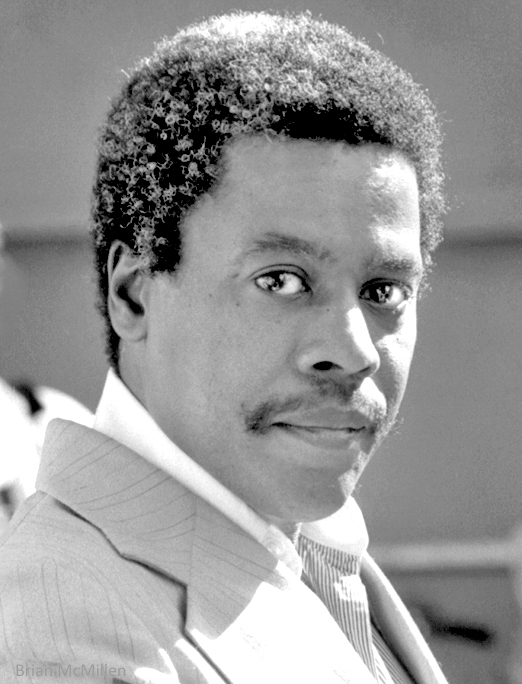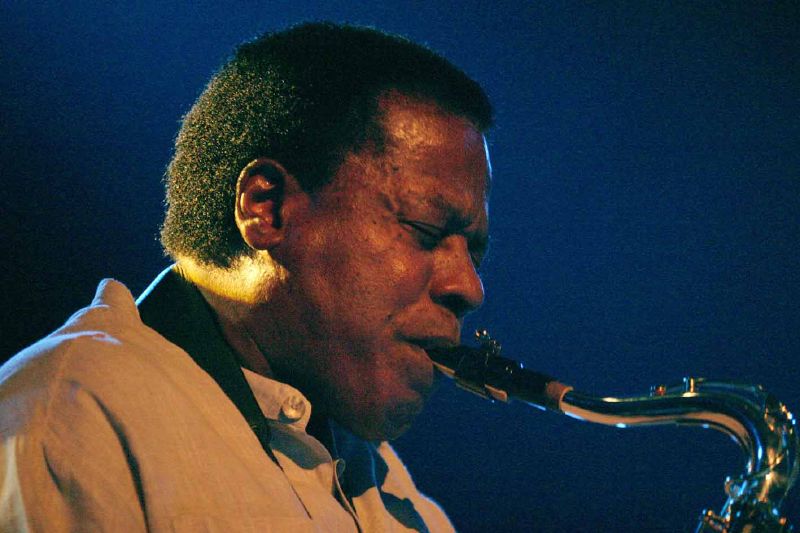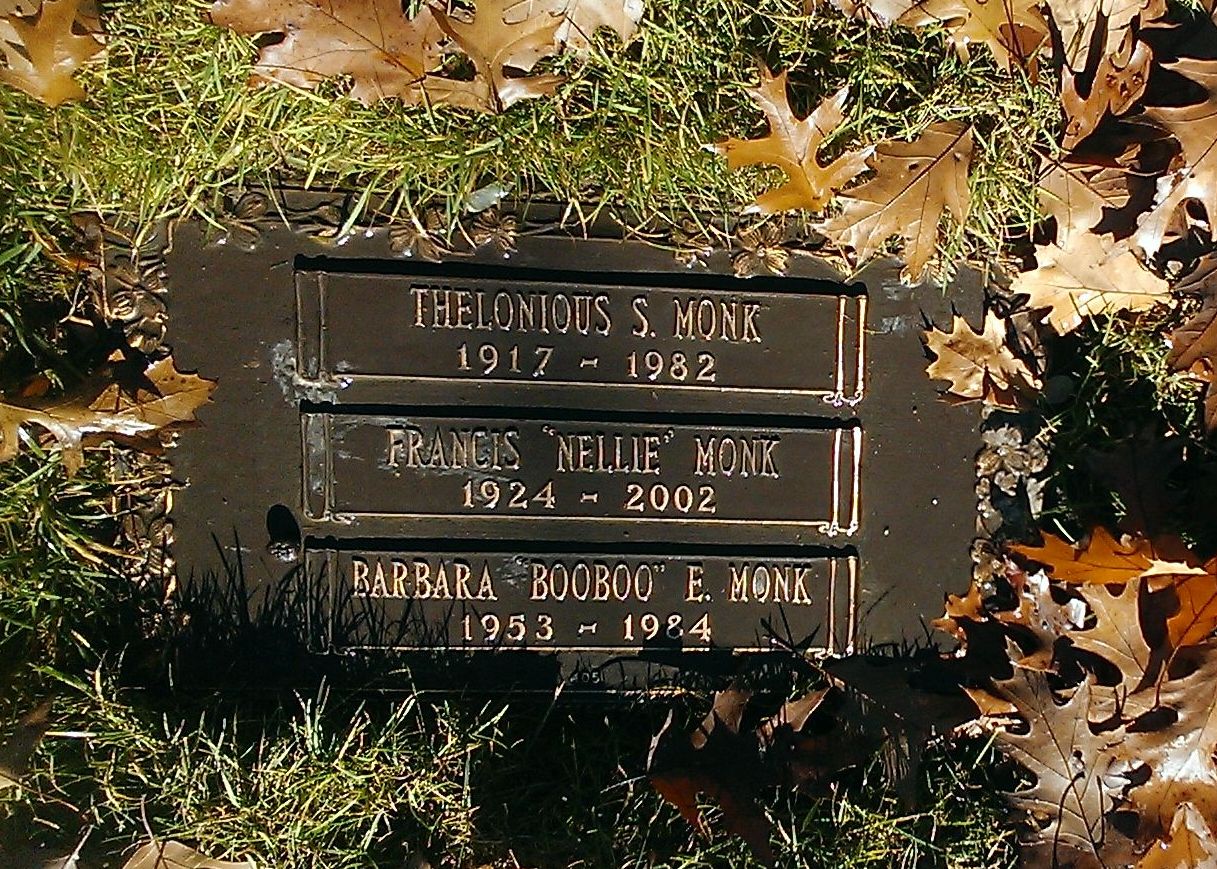|
Freefall (album)
''Freefall'' is an album by pianist Kenny Barron and violinist Regina Carter recorded in New York in late 2000 and released on the Verve label. accessed January 24, 2019 Reception In the review on , Richard S. Ginell stated "this session has plenty of life and wit; indeed, the sounds of the violin and piano go together as naturally in jazz as in the classical field (must be the resonating strings and wood factors that these instruments share). Carter clearly provides a lot of the spark with her ability to swing, often juxtaposed with classical poise straight from the conservatory, prodding the congenitally professional Barron into occasionally taking some chances".[...More Info...] [...Related Items...] OR: [Wikipedia] [Google] [Baidu] |
Kenny Barron
Kenneth Barron (born June 9, 1943) is an American jazz pianist and composer who has appeared on hundreds of recordings as leader and sideman and is considered one of the most influential mainstream jazz pianists since the bebop era. Early life Barron was born in Philadelphia, Pennsylvania. He had four siblings; his eldest brother was tenor saxophonist Bill Barron (musician), Bill Barron (1927–1989). Kenny Barron started playing piano at the age of 6 at his mother's insistence. "I hated it," he has said. "I wanted to be outside playing with the other kids. Eventually I did grow to love it." He studied with Vera Bryant, the sister of noted jazz pianist Ray Bryant and the mother of jazz guitarist Kevin Eubanks and jazz trombonist Robin Eubanks. At the age of 15, Barron played briefly with Mel Melvin's orchestra. In 1959, while still in school, Barron had local gigs with saxophonist Jimmy Heath. He also played a gig with Yusef Lateef two months before graduating from high school. ... [...More Info...] [...Related Items...] OR: [Wikipedia] [Google] [Baidu] |
Sigmund Romberg
Sigmund Romberg (July 29, 1887 – November 9, 1951) was a Hungarian-born American composer. He is best known for his Musical theatre, musicals and operettas, particularly ''The Student Prince'' (1924), ''The Desert Song'' (1926) and ''The New Moon'' (1928). Early in his career, Romberg was employed by the Shubert brothers to write music for their musicals and revues, including several vehicles for Al Jolson. For the Shuberts, he also adapted several European operettas for American audiences, including the successful ''Maytime (musical), Maytime'' (1917) and ''Das Dreimäderlhaus, Blossom Time'' (1921). His three hit operettas of the mid-1920s, named above, are in the style of Viennese operetta, but his other works from that time mostly employ the style of American musicals of their eras. He also composed film scores. Biography Early life Romberg was born in Hungary as Siegmund Rosenberg to a Jewish [...More Info...] [...Related Items...] OR: [Wikipedia] [Google] [Baidu] |
Regina Carter Albums
Regina (Latin for "queen") may refer to: Places Canada * Regina, Saskatchewan, the capital city of the province ** Regina (electoral district) ** Roman Catholic Archdiocese of Regina France * Régina, French Guiana, a commune United States * Regina, Minneapolis, Minnesota, a neighborhood * Regina, Missouri, an unincorporated community * Regina, New Mexico, a census-designated place * Regina, Virginia, an unincorporated community * Regina, Wisconsin, an unincorporated community People *Regina (given name) *Regina (name) *Regina (concubine), 8th century French concubine of Charlemagne *Regina (martyr) (died 251 or 286), French martyr *Regina (American singer), American singer Regina Marie Cuttita () *Regina (Slovenian singer), Slovenian singer born Irena Jalšovec (born 1965) * Regina "Queen" Saraiva (born 1968), Eurodance singer with the stage name Regina Films * ''Regina'' (1987 film), an Italian drama film * ''Regina'' (1989 film), an Estonian film * ''Regina'' (2023 fil ... [...More Info...] [...Related Items...] OR: [Wikipedia] [Google] [Baidu] |
Kenny Barron Albums
Kenny is a surname, a given name, and a diminutive of several different given names. In Ireland, the surname is an Anglicisation of the Irish ''Ó Cionnaith'', also spelt ''Ó Cionnaoith'' and ''Ó Cionaodha'', meaning "descendant of Cionnaith". It was once popular in the 16th-century in Leinster, Munster, parts of Connacht and in County Tyrone in Ulster, and was Anglicised as O'Kenna, O'Kenny, O'Kinney, Kenna, Kenney, Kenny, and Kinney amongst other variations. One bearer of the name was Cainnech of Aghaboe, better known in English as Saint Canice - a sixth-century Irish priest and missionary from near Dungiven, after whom the city and county of Kilkenny is also named. The Irish form ''Cill Chainnigh'' means "Church of Canice". It is thought that the ''Ó Cionnaith'' sept was part of the Uí Maine kingdom, based in Connacht. Within this area, the name is associated traditionally with counties Galway and Roscommon. Kenny is ranked at number 76 in the list of the most common sur ... [...More Info...] [...Related Items...] OR: [Wikipedia] [Google] [Baidu] |
Violin
The violin, sometimes referred to as a fiddle, is a wooden chordophone, and is the smallest, and thus highest-pitched instrument (soprano) in regular use in the violin family. Smaller violin-type instruments exist, including the violino piccolo and the pochette (musical instrument), pochette, but these are virtually unused. Most violins have a hollow wooden body, and commonly have four strings (music), strings (sometimes five-string violin, five), usually tuned in perfect fifths with notes G3, D4, A4, E5, and are most commonly played by drawing a bow (music), bow across the strings. The violin can also be played by plucking the strings with the fingers (pizzicato) and, in specialized cases, by striking the strings with the wooden side of the bow (col legno). Violins are important instruments in a wide variety of musical genres. They are most prominent in the Western classical music, Western classical tradition, both in ensembles (from chamber music to orchestras) and as solo ... [...More Info...] [...Related Items...] OR: [Wikipedia] [Google] [Baidu] |
Piano
A piano is a keyboard instrument that produces sound when its keys are depressed, activating an Action (music), action mechanism where hammers strike String (music), strings. Modern pianos have a row of 88 black and white keys, tuned to a chromatic scale in equal temperament. A musician who specializes in piano is called a pianist. There are two main types of piano: the #Grand, grand piano and the #Upupright piano. The grand piano offers better sound and more precise key control, making it the preferred choice when space and budget allow. The grand piano is also considered a necessity in venues hosting skilled pianists. The upright piano is more commonly used because of its smaller size and lower cost. When a key is depressed, the strings inside are struck by felt-coated wooden hammers. The vibrations are transmitted through a Bridge (instrument), bridge to a Soundboard (music), soundboard that amplifies the sound by Coupling (physics), coupling the Sound, acoustic energy t ... [...More Info...] [...Related Items...] OR: [Wikipedia] [Google] [Baidu] |
Wayne Shorter
Wayne Shorter (August 25, 1933 – March 2, 2023) was an American jazz saxophonist, composer and bandleader. Shorter came to mainstream prominence in 1959 upon joining Art Blakey's Jazz Messengers, for whom he eventually became the primary composer. In 1964 he joined Miles Davis' Second Great Quintet, and then co-founded the jazz fusion band Weather Report in 1970. He recorded more than 20 albums as a bandleader. Many Shorter compositions have become jazz standards. His music earned worldwide recognition, critical praise, universal commendation, and 12 Grammy Awards. He was acclaimed for his mastery of the soprano saxophone since switching his focus from the tenor in the late 1960s, and began an extended reign in 1970 as ''DownBeat''s annual poll-winner on that instrument, winning the critics' poll for 10 consecutive years and the readers' for 18. ''The New York Times'' music critic Ben Ratliff described Shorter in 2008 as "probably jazz's greatest living small-group composer ... [...More Info...] [...Related Items...] OR: [Wikipedia] [Google] [Baidu] |
Footprints (composition)
"Footprints" is a jazz standard composed by saxophonist Wayne Shorter and first recorded for his album ''Adam's Apple'' in 1966. The first commercial release of the song was a different recording on the Miles Davis album '' Miles Smiles'' recorded later in 1966, but released earlier. It has become a jazz standard. Rhythm Although often written in or , it is not a jazz waltz because the feel alternates between simple meter and compound meter. On '' Miles Smiles'', the band playfully explores the correlation between African-based (or ) and . Drummer Tony Williams freely moves from swing, to the three-over-two cross rhythm—and to its correlative. The ground of four main beats is maintained throughout the piece. The bass switches to at 2:20. Ron Carter’s figure is known as ''tresillo'' in Afro-Cuban music and is the duple-pulse correlative of the figure. This may have been the first overt expression of systemic, African-based cross-rhythm used by a straight ahead jaz ... [...More Info...] [...Related Items...] OR: [Wikipedia] [Google] [Baidu] |
Johnny Hodges
Johnny Hodges (July 25, 1907 – May 11, 1970) was an American alto saxophone, alto saxophonist, best known for solo work with Duke Ellington's big band. He played lead alto in the saxophone section for many years. Hodges was also featured on soprano saxophone, but refused to play soprano after 1940. Along with Benny Carter, Hodges is considered to be one of the definitive alto saxophone players of the Big band, big band era. After beginning his career as a teenager in Boston, Hodges began to travel to New York and played with Lloyd Scott (musician), Lloyd Scott, Sidney Bechet, Luckey Roberts and Chick Webb. When Ellington wanted to expand his band in 1928, Ellington's clarinet player Barney Bigard recommended Hodges. His playing became one of the identifying voices of the Ellington orchestra. From 1951 to 1955, Hodges left the Duke to lead his own band, but returned shortly before Ellington's triumphant return to prominence – the orchestra's performance at the 1956 Newport Jaz ... [...More Info...] [...Related Items...] OR: [Wikipedia] [Google] [Baidu] |
Thelonious Monk
Thelonious Sphere Monk ( October 10, 1917 – February 17, 1982) was an American Jazz piano, jazz pianist and composer. He had a unique improvisational style and made numerous contributions to the Jazz standard, standard jazz repertoire, including "'Round Midnight (song), 'Round Midnight", "Blue Monk", "Straight, No Chaser (composition), Straight, No Chaser", "Ruby, My Dear (composition), Ruby, My Dear", "In Walked Bud", and "Well, You Needn't". Monk is the second-most-recorded jazz composer after Duke Ellington. Monk's compositions and improvisations feature consonance and dissonance, dissonances and angular melodic twists, often using flat ninths, flat fifths, unexpected chromatic notes together, low bass notes and stride, and fast whole tone scale, whole tone runs, combining a highly percussive attack with abrupt, dramatic use of switched key releases, silences, and hesitations. Monk's distinct look included suits, hats, and sunglasses. He also had an idiosyncratic habit dur ... [...More Info...] [...Related Items...] OR: [Wikipedia] [Google] [Baidu] |
Sting (musician)
Gordon Matthew Thomas Sumner (born 2 October 1951), known as Sting, is an English musician, activist, and actor. He was the frontman, principal songwriter and bassist for New wave music, new wave band the Police from 1977 until their breakup in 1986. He launched a solo career in 1985 and has included elements of rock, jazz, reggae, classical, New-age music, new-age, and worldbeat in his music. Sting has sold a combined total of more than 100 million records as a solo artist and as a member of the Police. He has received three Brit Awards, including Brit Award for British Male Solo Artist, Best British Male Artist in 1994 and Brit Award for Outstanding Contribution to Music, Outstanding Contribution to Music in 2002; a Golden Globe Award, Golden Globe; an Emmy Award, Emmy; and four Academy Awards, Academy Award nominations. As a solo musician and as a member of the Police, Sting has received 17 Grammy Awards. He was inducted into the Rock and Roll Hall of Fame as a member of the ... [...More Info...] [...Related Items...] OR: [Wikipedia] [Google] [Baidu] |
Fragile (Sting Song)
"Fragile" is a song written and performed by English musician and singer-songwriter Sting from his second studio album, '' ...Nothing Like the Sun'' (1987). Released as a single the following year by A&M, it peaked at number 70 on the UK Singles Chart. Sung additionally in both Spanish and Portuguese under the titles "Fragilidad" and "Frágil", it appeared twice more on his 1988 EP variant of the album, ''Nada como el sol''. The Spanish version features as a B-side to " I'm So Happy I Can't Stop Crying". Background The song is a tribute to Ben Linder, an American civil engineer who was killed by the Contras in 1987 while working on a hydroelectric project in Nicaragua. In a 1994 interview with ''Miami Herald'', Sting said that the song's meaning "changes yearly. When I sing it now I think of Bosnia and Yugoslavia." The guitars on "Fragile" were played by Sting. Dominic Miller remarked in a 1999 interview with ''Virtual Guitar Magazine'' that Sting was "quite proud of the fac ... [...More Info...] [...Related Items...] OR: [Wikipedia] [Google] [Baidu] |







